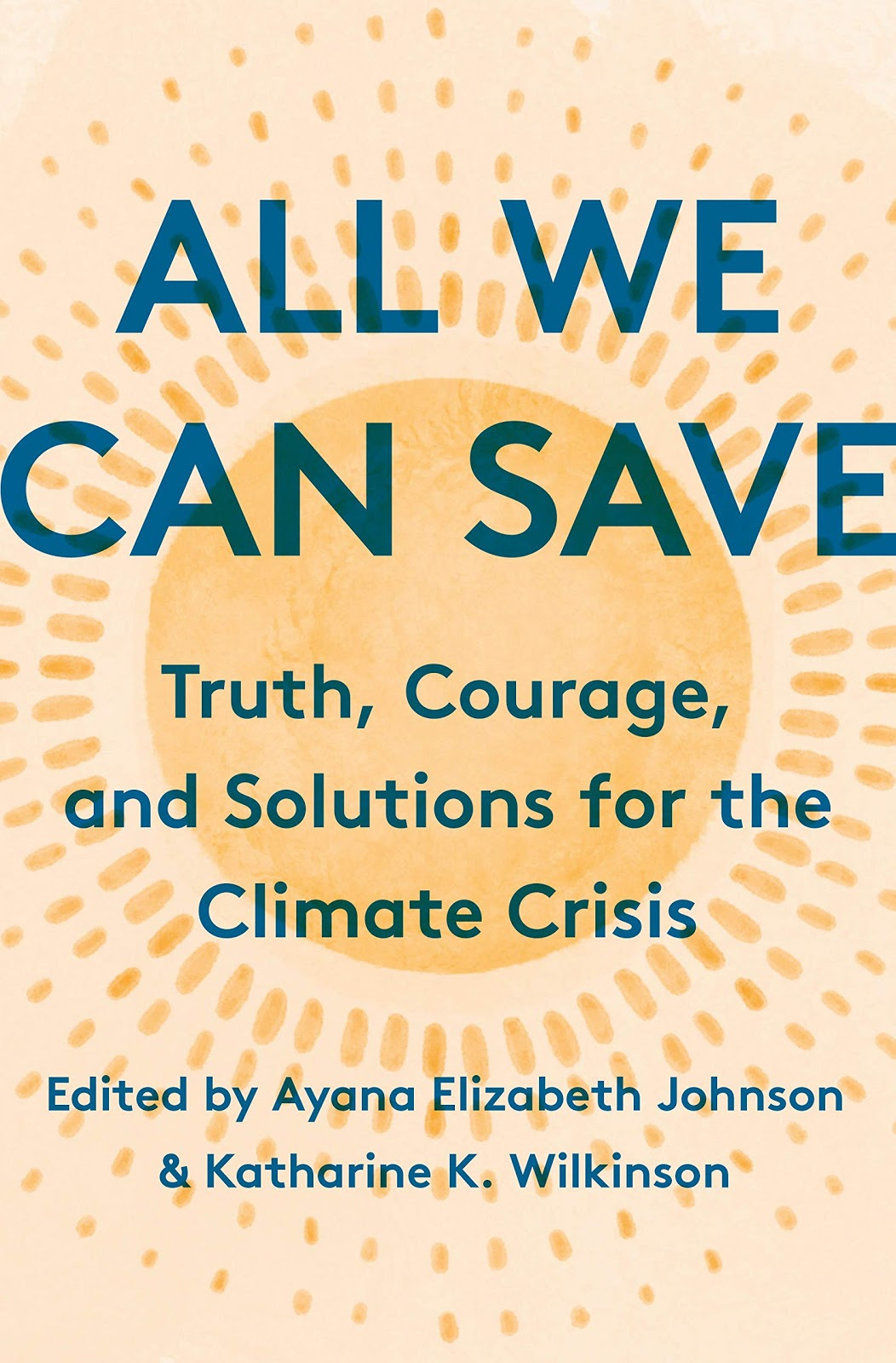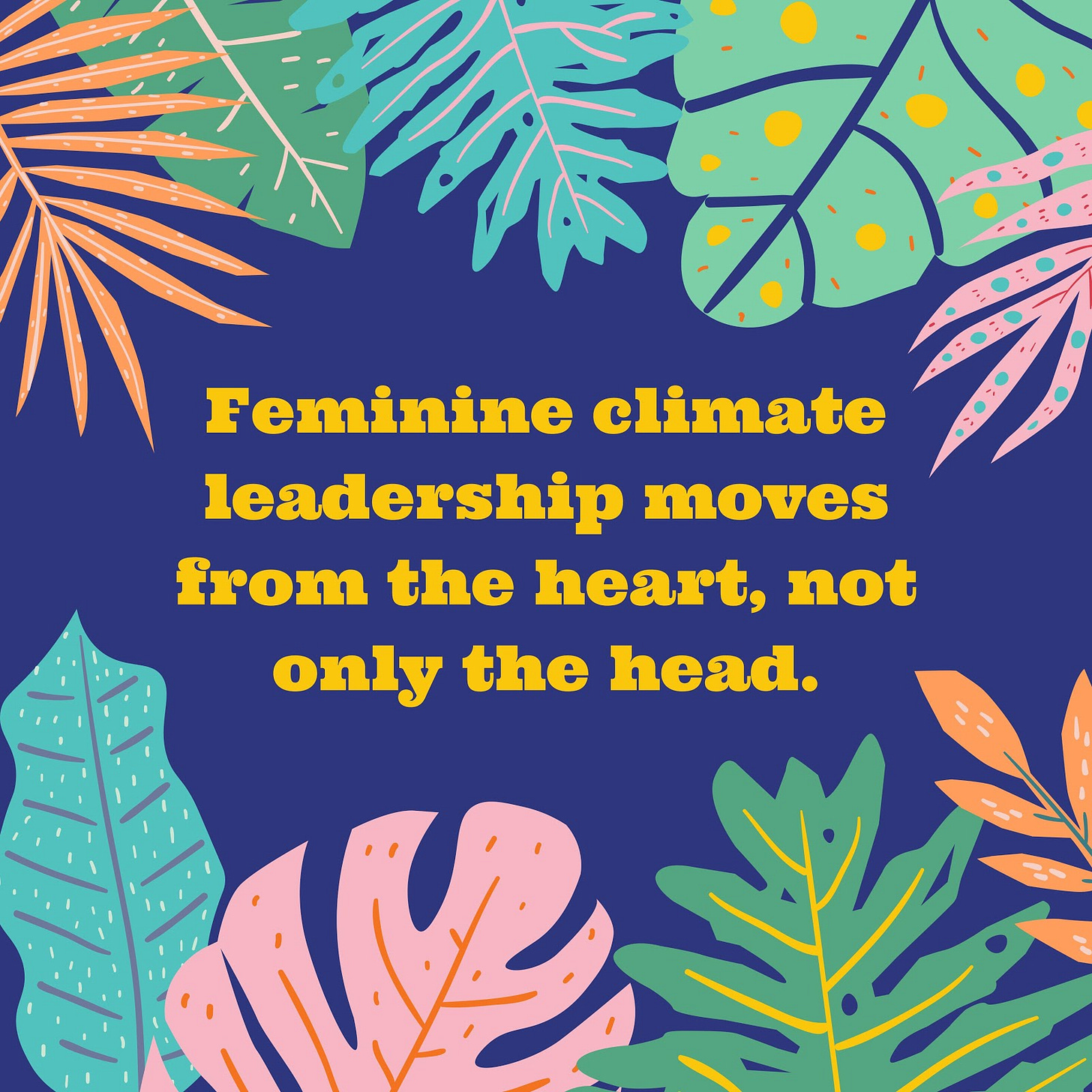Celebrating strong climate emotions in All We Can Save
Feelings get the centre stage they deserve in a new collection of climate writing
Hey Gen Dread head! (+ if you’re not yet one, why not sign up here?)
I figure we could all use some inspiration right about now (given the cascade of intersecting wildfires + storms + pandemic + you know the horrible drill…) that doesn’t skirt over how heavy things are. So I am going to use this issue to explore a new climate book with you that I strongly believe the world needs (which, by the way, I was not involved in making).

All We Can Save (which comes out next week) is a powerful collection of essays and poems from women who channel truth, pain, courage, and resilience in how they confront the climate crisis. Drs. Ayana Elizabeth Johnson and Katharine Wilkinson edited this collection in order to shine a light on the unique climate leadership capacities that are tied to a feminine approach. What approach is that, you ask? The way they see it, the feminine approach to climate leadership has four main components. To paraphrase them:
It is results oriented, not ego oriented; we would rather collaborate than be in the commander’s seat.
It focuses on healing social injustices, not deepening them.
It moves from the heart, not only the head. It has built-in radar to detect false binaries that say we must act one way or another in this crisis, and is fuelled by a tonic that mixes emotional and moral insight with scientific rigour.
It upholds community as the ultimate solutions library and foundation for health, joy, meaning, and purpose. We see individualism as the myth it has always been, while we also know that what poisons one will sicken us all.

All We Can Save is at once a confession of how it feels to watch the world burn, a promise to not forsake what can still be saved, and a commitment to do the right thing for the present moment rightness of it rather than for any expected outcome. The multifaceted mindset encapsulated by this book is the mindset we all need if we are going to be able to keep evolving through the devastation that’s unfolding around us.
FEEL
There’s a section in the book that deals explicitly with emotions, called “feel”. These essays contain exquisite insights into the feelings that flow when we stop pretending that this crisis is not laying waste to life in the unparalleled way that it is. I’ll share the single most arresting “climate emotions” idea I took from each one of these essays below.
Lesson 1: Grieving is a type of gravity and we must go down
In Under the Weather by Ash Sanders, we step into the world of two outsiders made sick by their society’s disavowal of its environmentally violent behaviour. After living intensely for many years as an activist, Sanders burns out, and retreats to a cabin in upstate New York in search of a habitable world and the sense that her existence doesn’t automatically pollute that of another. Above all, she wants to grieve. “To say, this is unbearable, and to have people to try to bear it with.” The relationship the two main characters share contains what Gen Dread reader and philosopher Robert D. Stolorow argues we must cultivate in Planet Earth: Crumbling Metaphysical Illusion if we are to tolerate our growing apocalyptic anxiety. It’s a concept he calls “emotional dwelling”. This is the act of “leaning into the trauma of another head-on, articulating the unbearable and the unendurable, saying the unsayable, unmitigated by any efforts to soothe, comfort, encourage, or reassure.” That is, to grieve with another and be honest about it.
Lesson 2: Mom pain mobilizes
In Mothering in an Age of Extinction, Amy Westervelt describes the balance beam she lives on as a climate reporter and mom of two kids. Her situation requires that she wobbles from time to time, like when her seven year old asks her what college will be like, “and I think of the Greenland ice sheet melting and wonder, with a lump in my throat, if college will even be a thing when he’s older.” Westervelt paints the unenviable picture of performing hope for her kids, when what she really feels is terror. Instead of highlighting how fear has caused many people to not be sure if they can handle the emotional responsibility involved in bringing a kid into our precarious world, Westervelt doubles down on the value such fear can have. As a climate reporter, she knows exactly how bad things are looking. But she says that it’s “mostly the images of my kids (and yours) embroiled in resource wars, losing their innocence far too young, wearing gas masks to high school (because of the fires, duh), and an accompanying sense of righteous indignation on their behalf that propels my work on the subject.” Moms are fierce architects of climate action and ought to be utilized - and celebrated - more in the movement.
Lesson 3) Ask yourself how you will feel about how you responded to this crisis when you’re on your deathbed
In Loving a Vanishing World by Emily N. Johnston, we are reminded of the unique agency we have in this moment to shepherd human and animal life into the next generations that will otherwise disappear. When the stakes are as high as they are, this takes serious effort as well as our most crucial resources: attention, time, and commitment. There’s no single way to accept this responsibility. All our attempts matter, even though they will never be enough. As Johnston writes,“ We don’t have to believe they’re adequate—we only have to understand that not doing them would mean we’d decided not to care for this world and ceded the greatest power we’ve ever had, in order to . . . what? Watch television? Do yoga? Make really cool apps? How will those choices feel when you’re dying and you know the world is too? How do they feel even now, when whole towns go up in flames, when “hundred-year” storms happen with sickening frequency?” We are each tasked to find our own authentic role in helping life on Earth move through this crisis. Asking yourself how you’d feel on your deathbed if you found yourself there today can be a helpful way of identifying the role you ought to be playing.
Lesson 4) Climate professionals require specialized emotional support to do their work and not burn out
In The Adaptive Mind, social scientist Susanne Moser explains why burnout is so common in climate work. The psychological strain of confronting the climate crisis leaves professionals sick, less effective, and unable to use their much-needed expertise to help a heating planet. Moser studies the unique propensities, capacities, and skills that allow climate professionals to keep showing up to do their emotionally taxing work without burning out. She calls this amalgam the “adaptive mind”. It draws on fields like “psychology, military training, business management, education, sustainability, organizational development, ecosystem management, leadership studies, arts and the imagination, social capital theory, faith and spirituality, and emergency response.” To prevent burnout, Moser argues new professional support systems must be co-created by climate experts, their institutions, and psychologists. Until that happens, she offers a list of practices in her essay that climate professionals can use to protect their emotional wellbeing for the long haul.
Lesson 5) We don’t need to feel hopeful in order to get to work. We need to get to work for hope to be possible.
The climate storytelling police whose sirens blare “people won’t take action if they don’t feel there’s hope” have finally been abolished by climate justice essayist Mary Annaïse Heglar in Home is Always Worth It. In many of her essays, Heglar reminds us that marginalized and historically oppressed communities have always had to fight even when the outlook was - and is - dire. After all, action does not often spring from a rosy vision of a hopeful future, but from a dignified desire to live. Why should the case be different in the climate crisis...for anyone? The laziness underpinning much (predominantly white) climate discourse -- the kind that insists on knowing what hope looks and feels like before it commits to diving in -- gets the formula for resilience backwards. As Heglar writes “What if hope isn’t what leads to action? What if courage leads to action and hope is what comes next?” When it is up to us to save ourselves, we need to learn how to be brave. And when we muster the courage to act bravely, the hope so many of us are hungry for will cease to be in such short supply.
What’s one thing you could see yourself doing over the next week to move forwards into a place of greater courage and bravery when it comes to how you’re engaging with the climate crisis? Is it to have more honest conversations with the people around you? Is it to raise an unpopular idea within your organization? Is it to abandon a certain plan and set a new priority? Something else? Courage can live inside decisions as tiny as a grain of sand or as enormous as a whale. Leave a comment to let me know, and see you next week!




